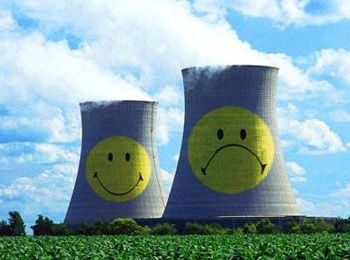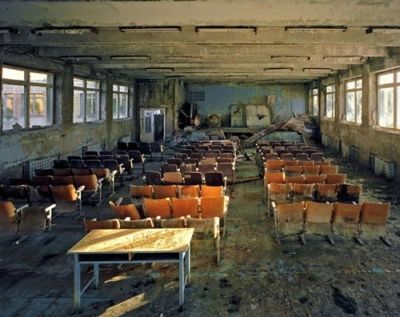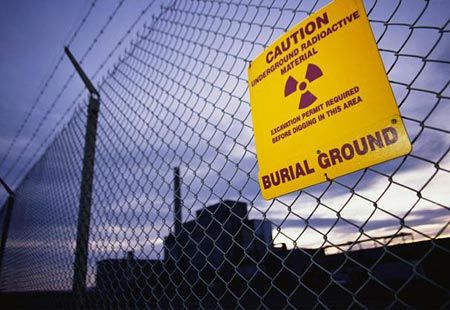
Publisher:
Bonnie King
CONTACT:
Newsroom@Salem-news.com
Advertising:
Adsales@Salem-news.com

~Truth~
~Justice~
~Peace~
TJP
Mar-14-2011 22:27

 TweetFollow @OregonNews
TweetFollow @OregonNews
Renewable Energy Revisited
JD Adams Salem-News.comThe debate over the relative merits of the nuclear industry will soon focus on alternative energy with renewed vigor.
 Nuclear 'reaction' by Salem-News.com |
(SALEM, Ore.) - The nuclear emergency in Japan continues to unfold, with six reactors in an unstable state due to cooling problems brought about by the earthquake and tsunami events last weekend.
The specter of a nuclear meltdown, with the possibility of nuclear contamination over a wide area of Japan at the very least, has re-ignited the debate about the safety of nuclear power. In this article we shall investigate the history of atomic proliferation as it relates to the future of renewable energy.
The Japan nuclear emergency is an example of how the best contingency plans can go wrong in real-life situations. Make no mistake, Japan is a country that has considerable experience with earthquakes, being located near fault lines not unlike in the Pacific Northwest. The present state of turmoil in Japan underscores how nuclear powerplant design is inherently vulnerable during natural disasters where utilities may be interrupted.
The 40 year old nuclear reactors in Japan are made by GE, and 23 like them exist in the United States. Despite the renewed debate over the hazards of nuclear energy, President Obama has declared that we will learn from the events in Japan, in order that the movement toward renewable energy can continue in the U.S., including more proposed nuclear power plants.
This stance may become controversial in light of other alternative energy sources that are on the horizon. Until the recent Japan disasters, the opposition against nuclear energy had softened with the passage of time since the Three Mile Island and Chernobyl nuclear incidents, and the intense debate over the role that anthropogenic carbon dioxide plays in the perceived increase in global surface temperatures, by itself a controversial subject and beyond the scope of this article.
The Three Mile Island reactor was located near Harrisburg, Pennsylvania. The March 28, 1979 accident consisted of a partial meltdown caused by a pilot-operated relief valve that was stuck open, resulting in the loss of reactor coolant. The emergency unfolded over a period of five days while plant operators struggled to realize the nature of the problem.
Confusion arose due to poor training and the industrial design of the user interface. The Three Mile Island accident was the worst nuclear accident in the U.S., although the radioactive emissions were deemed to be of minimal impact on the environment. A least one expert on nuclear reactors disputes the official figures of released radioactivity, however.
 Class in Pripyat, abandoned since Chernobyl disaster. |
The Chernobyl reactor was located near the town of Pripyat in the then-Ukrainian Soviet Socialist Republic. This April 26, 1986 disaster was the worst nuclear accident in history to date, caused by a catastrophic surge in output power during a safety test, resulting in an explosion that exposed the reactor to open air. Radioactive fallout drifted over the western Soviet Union and Europe, including Turkey, Greece, Moldova, Romania, Bulgaria, Lithuania, Finland, Denmark, Norway, Sweden, Austria, Hungary, Czechoslovakia, Slovenia, Croatia, Poland, Estonia, Switzerland, Germany, Italy, Ireland, France, Corsica, as well as Canada and the United Kingdom.
The fallout resulted in widespread evacuations and the resettling of over 336,000 people, with an estimated 4,000 deaths directly attributable to the disaster. The Chernobyl disaster has resulted in statistically significant increases in cancers and Downs Syndrome, with detectable health effects anticipated for the next 70 years.
The disaster was blamed on human error, inadequate operating instructions, and deficiencies in design. Unlike the Chernobyl reactor, the Japanese reactors in question employ multiple containment structures to reduce the likelihood of radioactive emissions.
Significant amounts of radioactive materials were also released by the Hanford Nuclear Production Complex in the state of Washington. The health of the public and ecosystems were threatened by emissions entering the atmosphere and the Columbia River during a period from 1943 to the end of the Cold War. To cool the Hanford reactors, water was drawn from the Columbia and returned to the river every day containing long-lived radioactive isotopes. This process was kept secret by the Federal Government, and later measurements detected the radiation on the Oregon and Washington coasts.
 Hanford Nuclear Reservation was the home of the Manhattan Project. |
The plutonium processing at Hanford resulted in radioactive releases into the air that drifted to Idaho, Montana, Oregon, and British Columbia, being heaviest from 1945 to 1951. The contamination entered the food chain through dairy products consumed by affected communities. 53 million gallons of highly radioactive waste remains at Hanford, making it the most contaminated nuclear site in the U.S., and the center of the nation's largest environmental cleanup.
The Hanford Nuclear Reservation was created as part of the Manhattan Project to produce weapons-grade plutonium from the more available uranium. The Manhattan Project began with the Einstein-Szilard Letter written by concerned physicists, warning that Nazi Germany might be capable of producing nuclear weapons. The letter was signed by Albert Einstein and delivered to President Franklin D. Roosevelt in 1939.
The debate over the relative merits of the nuclear industry will soon focus on alternative energy with renewed vigor, perhaps even breathing life into new approaches proposed for cold fusion. Early failed attempts at cold fusion, most notably by the infamous Stanley Pons and Martin Fleishman, made it synonymous with pseudoscience. The true believers soldiered on, renaming their research Low Energy Nuclear Reactions, or Chemically Assisted Nuclear Reactions, if you prefer. A new implementation of LENR pioneered by Sergio Focardi and Andrea Rossi has an input of 400 watts and an output of 12 kiloWatts using a novel nickel-hydrogen fusion. It has apparently survived it's first public demonstration, and is scheduled for commercial development.
New photovoltaics have fused technologies inspired by plant photosynthesis with semiconductors. To quote photonics: "Oxford Photovoltaics (Oxford PV), formed with the help of Isis Innovation, Oxford University's technology transfer company, has combined earlier research on artificial photosynthetic electrochemical solar cells and semiconducting plastics to create manufacturable solid-state dye sensitized solar cells."
The materials employed are nontoxic, abundant, inexpensive, noncorrosive, and more versatile in form than conventional solar panels. While several second-generation solar start-up companies have gone away, solar pundits are betting on 2011 as being a banner year with Alta Devices, whose thin-film compound semiconductor process is approaching 30% efficiency at 50 cents per watt. These numbers will challenge the dominance of fossil fuel, and create a new cost paradigm in the solar industry. The process is adaptable to rigid or flexible applications.
The prospect of renewable energy from intermittent sources like sunlight and wind is arguably dependent on energy storage. But new concepts in smart-grid technology, essentially switching power to where it's needed, will render this argument obsolete. Nevertheless, Claus Rubenius is moving ahead with a plans to create a Gigawatt-scale energy warehouse in Mexico using immense sodium sulfur batteries. The energy storage facility will be in the Silicon Borders Science Park in Mexicali, Mexico. All the necesary heavyweights have signed off on the deal, including President Obama, Mexico's President Calderon, Japan's NGK CEO, and it's full speed ahead.
A venerable storage technique is pumped hydro, where water gains potential energy by being pumped uphill, and at the appropriate time is allowed to flow downhill to generate power. The second most-used technique is Compressed Air Energy Storage, capable of being employed on grid scale. An estimated 80% of the U.S. has suitable geology for CAES, which can be used with underground caverns or containment vessels. CAES is refreshingly low tech, economical to implement and maintain, and a useful addition to the arsenal of energy storage schemes.
Sources:
newenergyandfuel.com/
world.std.com/~mica/
wattsupwiththat.com/2011/01/22/cold-fusion-going-
www.greentechmedia.com/
www.greentechmedia.com/
www.greentechmedia.com/
en.wikipedia.org/wiki/Hanford_Site
en.wikipedia.org/wiki/Manhattan_Project
en.wikipedia.org/wiki/
en.wikipedia.org/wiki/Three_Mile_Island_accident
en.wikipedia.org/wiki/Chernobyl_disaster_effects
en.wikipedia.org/wiki/Nuclear_power_debate
 J. D. Adams was born in Salem, Oregon, a descendant of Oregon Trail pioneer William Lysander Adams. As a wilderness explorer, photographer, and writer, he sustains a kinship with the spirit of the Oregon country. JD inhabits Oregon's Silicon Forest as an electronics professional with degrees in Electronics Engineering Technology and Microelectronics.
J. D. Adams was born in Salem, Oregon, a descendant of Oregon Trail pioneer William Lysander Adams. As a wilderness explorer, photographer, and writer, he sustains a kinship with the spirit of the Oregon country. JD inhabits Oregon's Silicon Forest as an electronics professional with degrees in Electronics Engineering Technology and Microelectronics.
He maintains a Web presence with a signature presentation in genres including travel, history, and technology.
You can write to Jim Adams at this email address: j1mcm0s@earthlink.net
Also, visit Jim's Website: home.earthlink.net/~j1mcm0s/
Articles for March 12, 2011 | Articles for March 14, 2011 | Articles for March 15, 2011


Quick Links
DINING
Willamette UniversityGoudy Commons Cafe
Dine on the Queen
Willamette Queen Sternwheeler
MUST SEE SALEM
Oregon Capitol ToursCapitol History Gateway
Willamette River Ride
Willamette Queen Sternwheeler
Historic Home Tours:
Deepwood Museum
The Bush House
Gaiety Hollow Garden
AUCTIONS - APPRAISALS
Auction Masters & AppraisalsCONSTRUCTION SERVICES
Roofing and ContractingSheridan, Ore.
ONLINE SHOPPING
Special Occasion DressesAdvertise with Salem-News
Contact:AdSales@Salem-News.com



Terms of Service | Privacy Policy
All comments and messages are approved by people and self promotional links or unacceptable comments are denied.
[Return to Top]
©2025 Salem-News.com. All opinions expressed in this article are those of the author and do not necessarily reflect those of Salem-News.com.